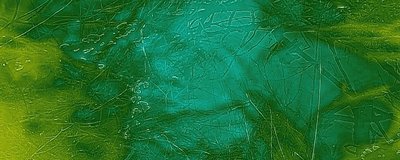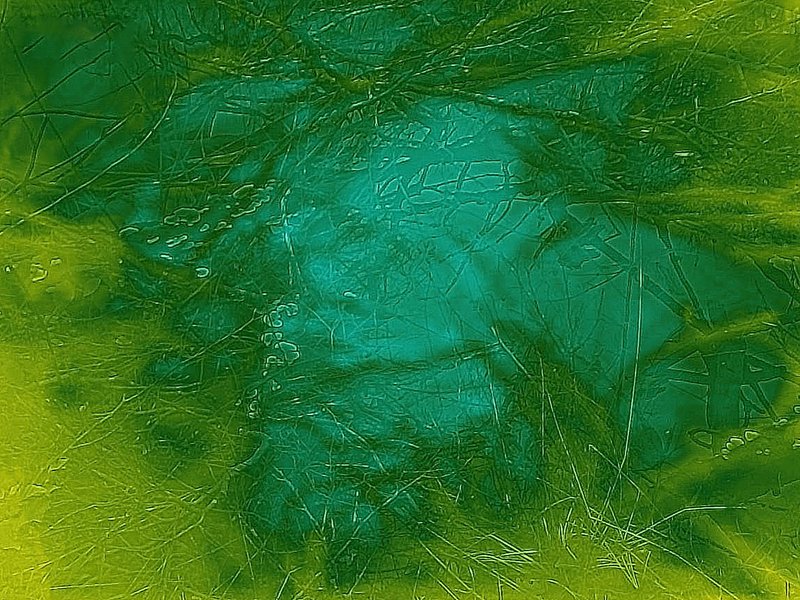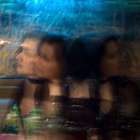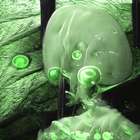Transient Patchiness: The Slippery Territories of groWorld

Abstract
Life becomes the theme, the tool, the implementation protocol and the final result of contemporary bio-artistic endeavours. Inexorably diverse and unorthodox life, grown from the desire to explore the unknown, similar to speculative inquiry in the fundamental sciences. Mongrels spawn from the amalgamation of “things that are grown” with “things that are built,” resulting in “things that are built that grow things that are grown.” Growth underlies both biological life and economic progress, being a focus of many emerging sciences, technologies and art forms.

Full text
Transient patchiness: the slippery territories of groWorld
Maja Kuzmanovic and Nik Gaffney, FoAM Belgium
Life becomes the theme, the tool, the implementation protocol and the final result of contemporary bio-artistic endeavours. Inexorably diverse and unorthodox life, grown from the desire to explore the unknown, similar to speculative inquiry in the fundamental sciences. Mongrels spawn from the amalgamation of 'things that are grown' with 'things that are built', resulting in 'things that are built that grow things that are grown'. Growth underlies both biological life and economic progress, being a focus of many emerging sciences, technologies and art forms. Different approaches to growth (cyclical, linear, accelerated, chaotic, slow, smooth) influence the outcomes of human activity and the impact of the activities on the world in which they are embedded. As an artistic concept, growth is opposed to the notions of artworks as finished products, that can be exhibited and sold for aesthetic enjoyment. Growth implies an element of wilderness, of the untamed and the uncontrollable, of a continuous process responsive to the conditions of its surroundings. The GroWorld initiative germinated from a fascination with the robustness and diversity of things that grow. It is a broad project, trying to encompass many points of view on the way ‘life’ is treated in different economies, sciences, arts and politics. It also attempts to situate all developments in local situations, looking at interactions within particular ecological habitats, as well as the points of contact between diverse habitats, in order to bring to attention the benefits of gradually grown trans-local diversity as opposed to industrially engineered global monoculturalism. The life that groWorld seeks is the substance that grows through the cracks in dissimilar, extreme and potentially hostile environments - such as de-activated urban spaces, ecologically (or otherwise) polluted areas (think of the Chernobyl "involuntary wildlife park"), bottoms of oceans and volcanic fluxes.
Groworld is developed in three trajectories - Sym, Bio and Sys. On the edges of sym-bio-sys, 3 transitional areas formed into highly speculative possible worlds in which humans can interface with plants (through an HPI (human-plant- interface), induce alternative states of consciousness by electronically simulating psychoactive plant compounds (Cyberbotany) and populate computational worlds with artificial creatures that are fed by stimuli from the biological world (Artificial-life).
'Sym' trajectory looks at cultural applications of biological growth: active materials, biomimetic design, generative processes in gaming and evolving responsive environments. 'Bio' trajectory researches the impacts of human activity on the changes in eco-systems on local and global scales, specifically focusing on the alarming decrease of biodiversity in many habitats, as well as gardening as a potential act of resistance. 'Sys' encourages the development of technological systems inspired by biological and cultural life (not restricted to biotechnology) – rather than reducing life to a machine, we attempt to make technology and its processes more life-like. Even though 'Sym', 'Bio' and 'Sys' can be seen as separate trajectories, their development occurs in parallel, allowing for edges between them to become new areas of investigation. In between sym and bio, culture and nature, inspired by the well established discipline of ethnobotany, a new discipline emerged named cyberbotany – that looks at the ancient usage of plants for accessing ‘virtual’ or ‘spiritual’ realities, and applying this knowledge in the design of computational worlds and mixed reality environments. In between sym and sys the worlds designed by the cyberbotanists become populated with a-life creatures, that can develop into cultures, evolve new species and social structures. Finally, to re-connect these populated worlds with their biological habitats, a human-plant-computer interface would need to be developed, as a translation device between the animal-plant and machinic kingdoms (with human-animal-plant-computer interface being the next step in this long term process).
Sym-
While being informed by the current understandings of morphogenesis of living organisms, such as plants or swarm populations, ‘sym’ does not attempt to replicate biological patterns, structures or behaviours. Instead, it looks for emergent properties of growing synthetic life forms: visual worlds, sonic structures and responsive materials.
The first prototype of the ‘sym’ trajectory was seeded at the Burning Man festival in the desert of Nevada, USA. A responsive environment was designed to give the appearance of a virtual forest, of light becoming tangible, solid tissue growing from the windswept, cracked silt bottom of a dehydrated lake. As the participants approached the two-dimensional, electro-luminescent contours of endangered plants ‘inflated’ into the third dimension by spinning at high speed – thereby creating an illusion of volume. In the centre of the forest, inside a ‘growth- bunker’ airborne roots of luminescent vegetation responded to pressure of the participants’ bodies, generating pulsing patterns of light. The lightness and density of the space depended on the movement across the floor, often resulting in a slow, hallucinatory atmosphere of liminal changes in light and sound. Currently, the research explores materials such as artificial muscle technologies and electrostatic polymer gels for the creation of more 'flexible' architectures of public spaces and processes such as cell-signalling and bioluminescence that could be used in the design of responsive media and materials in virtual worlds and mixed realities.
Cyberbotany
Creating passages between realities is a known and established practice in shamanic cultures. The secret knowledge about psycho-active plant compounds is passed from generation to generation of shamans able to ‘access’ parallel or spiritual realities. Plants that affect the chemical processes in the brain have the ability to alter and mutate the normalised state of consciousness, allowing non- sensorial worlds to enter into the range of sensorial experiences. By making the invisible or inexplicable perceivable, these substances are often used as a mutagen for cultural behaviour, opening of new perspectives, forecasting, out-of- the-box problem solving, envisaging alternative worlds.
"The first human cultigens were psychotropics and therefore the first gardeners of the Mesolithic were probably shamans (and certainly shamanesses, experts in psychotropic gardening)... There must exist a profound sense of secret power in knowing that one has created a garden capable of altering the consciousness of one's entire community, even without breaking a single law."
– Hakim Bey
In groWorld, ethnobotanical research branches into a new direction: cyberbotany, a study of digital compounds that can induce alternative states of consciousness and bring possible worlds into the tangible range. These compounds will be designed according to meticulous experiments with existing ethnobotanicals in different parts of the world, known to the local (indigenous) people as substances that can act as temporary mutagens of perception and experience. The active substances and their phenotypes, metabolic pathways and their effects on human consciousness (as recorded throughout history) will be used to guide the design of the morphology and the evolutionary logic of the groWorld computational ecology.
-Bio-
The groWorld initiative germinated from discussions about the impact of biotechnology on life (locally and globally), conducted with a group of environmental activists in the summer of 1999. The site for these discussions was the Burning Man festival, situated in a desert, on the bottom of a dried up lake, where macroscopic life-forms (including humans) have a minimal chance of survival. Similar to the course of the trip from the coast of California to the desert of Nevada, the longer the conversation went on, the more barren the mood became – one doom-scenario piled up on another, until there seemed to be no solution to the problems caused by the arranged marriage between biotechnology and the environment. Unless our society’s life-style changes quickly and drastically (which seemed to be the least likely scenario). Issues of decrease in biodiversity, patenting life and indigenous knowledge, endangered medicinal plants used for the fabrication of mass-market drugs, genetically modified organisms and many more demand swift and substantial action.
However, what can a small arts collective do to improve the situation? Do we understand the issues well enough to be able to form an opinion and express it publicly, thereby influencing the opinion of others? What impact can we have on a living environment if we use biological systems to pursue our artistic goals? What gives us the authority to make ethical judgements about biotechnology if we use the tools produced by the same technology to develop our artworks? Is biotechnology evil in all its disguises, or can we safely contribute to the development of some of its strands, while condemning the products and methods of others?
Corporate biopiracy came to the surface as one of the most menacing by- products of the biotechnological era. Today, small farmers are discouraged from cross-breeding and developing new species, as they might be infringing upon a patent and consequently could be prosecuted. The seed markets are controlled by a handful of mainly western biotech industries, whose relentless introduction of several strands of transgenic crops caused quick and drastic mutations in some plants and animals, rupturing the natural habitat's balance. Several trans- national biotech conglomerates (Dupont, Monsanto, Novartis, W.R. Grace and others) have elaborate intellectual property mechanisms (supported by the WTO and GATT agreements) that endanger the evolution of flora, fauna and human cultures worldwide [5]. This process has its roots in the colonial era, when the indigenous plants and animals were treated as exploitable resources, and species were exterminated before the local constituencies could act.
Furthermore, small farmers and especially horticulturalists, unable to compete with the large industries have been forced to breed monocultures that diminished the genetic diversity of the local ecology. There are already several examples where large scale monocultural agribusiness proved unsustainable and is inevitably leading to its own collapse, as well as potentially the destruction of the biological environment it invaded. The crippled plants, engineered to die out after the first harvest, unable to reproduce within or without the species (as a protective measure) are a weak opponent to the robust ecological processes. Biological life is not defenseless nor innocent and has many mechanisms to fight the plague of rampant capitalism fed by biotech innovations. The more out of balance the eco-system is forced, the harder it will fight back. Even a few years after the introduction of transgenic monocultures, new super-weeds sprouted, attempting to re-introduce a stabilised, well adapted diversity of life-forms. It is possible to engineer new, stronger plants that will wipe out the weeds, but the cycle will unpreventably continue. Life grown on principles of competition with biological environments can not be beneficial for either competitor in the long term. Geneticaly modified organisms can have a great benefit for humans and potentially increase the diversity of their natural habitats, but they should not be bred into monocultures. Advances in biotechnology, when not sucked dry by the machinery of financial gain, can help learn from nature to improve and enrich people’s lives.
As propagators of diversity in all fields of human activity, we have decided that gardening was the simplest, most fruitful and positive way start working hand in hand with artists and scientists towards a heterogeneous and abundant future. As Hakim Bey tells us in Avant Gardening; “Gardening will emerge as one of the major economic forces of resistance, but also as a central cultural focus… a cause that is both symbol and substance of the reality envisioned in the very act of resistance.” [6] Following the proven methods used by permaculture gardeners and natural farmers, such as David Holmgren [2] and Masanobu Fukuoka [1], we began implementing our long term target: growing indigenous plant-life, as weedy patches sprouting from the cracks in the concrete urban jungle. The ‘bio’ strand of groWorld is spawning a ‘trans-local edge-habitat’ , a distributed network of public gardens (named groWorld pocket-ecologies), planted on abandoned or otherwise 'de-activated' sites in urban and sub-urban environments around the globe. These gardens will be re-activated and virtually augmented as thriving new edge-habitats: that can be planted, cultivated, harvested and enjoyed in the physical and virtual worlds. The pocket-ecologies are conceived as living (and lived) archives of the local bio-diversity. The groWorld team works locally, gathering information about the current conditions of the regional eco-systems, potential threats and benefits. The information is gathered from established botanical and agricultural resources, but also small farmers, indigenous nurseries, children and amateur gardeners. Different species of (endangered) native plants are chosen, including ground-covers, shrubs, grasses, flowering plants, bushes and trees. All seeds are thoroughly mixed together with plant compost and red/brown clay and then rolled into 'seed-balls' (see [1]), complete eco-systems contained in a hard protective shell of dried clay. Simultaneously, the team makes a map of potentially fertile, but neglected sites in city-centres, industrial and residential areas. The seed-balls are scattered on these sites, that are marked on the streets, on photographic and topographical maps and street directories. After the first rains, the seed-balls decompose, providing enough nourishment for the fragile seedlings. In 2-3 years, the gardens should become fully grown and self-sustaining. The groWorld pocket-ecologies are sites evolving of their own accord - patches of autonomous organic wilderness in the midst of an urban jungle, grown and molded by their surroundings, care-takers and temporary dwellers. Industrial ruins overgrown by mutated nature, car-parks, rooftop gardens and corner-parks, remnant islands of diverse local vegetation.
After the gardens have taken root, plant-life will be seeded with sensing technologies, allowing for remote monitoring of the gardens' sprouting. The data gathered from the gardens will be used to guide the growth of a virtual 'data- ecology', through which the local sites (in 2004: Adelaide, Brussels, Pula, Tallinn) will be intertwined with each other, simulating a massive edge habitat, in which the separate gardens can grow to encompass the 510 million square kilometers of a simulated Earth's surface. The data-ecology is an attempt to map the weedy patches of groWorld gardens and bring them in contact with each other, through an earth-size online world, a macro edge-habitat in which the species can cross- fertilise into new (artificial) life forms. The sensing technologies buried in the biological gardens are the 'roots' of the data-ecology, that will provide the online world with real-time data on the state of the gardens (growth rate, humidity, human activity…). Based on this information, the garden’s virtual extension will grow and change, influencing the virtual gardens around it. To close the cycle of biological-artificial-biological growth, the groWorld team will return to the gardens and infuse them with media generated in the overgrown data-ecology, allowing for the mutated a-life gardens to be experienced as an integral part of the local eco-system.
a-life
Computer simulations are fundamentally different from biological- chemical- or physical systems. However, the development of methods for automated adaptation (that go further than programming a machine) can transform these systems into life-like, growing informatic entities (individuals, populations, environments). The evolution of a simulated environment can draw upon the vast expertise of life sciences involved in describing the processes that make an organism (or an environment) ‘alive’. It is curious that although humans have studied life for centuries, there is still little common understanding of what it means to be alive. There are no criteria according to which one can measure the 'aliveness' of a system. Even when a natural habitat seems dead to the naked eye, it is probably swarming with microscopic organisms. Virtual environments populated by artificial life-forms rarely possess the ability to slide along the boundary between alive and dead through slow decay (that potentially feeds other life), as the biological environments do.
The data-ecology developed in groWorld will be designed to explore the limits of near-life and decay as a part of a digital ecology. Morphogenesis of the groWorld data-ecology can be described as a geo-biological system, based on models of the world as a living organism. This ecology is essentially a computational simulation of a trans-local garden, evolving based on the information supplied through two channels, the sensing technologies planted in the biological gardens (see ‘bio’) and communication processes, exchange of ideas and everyday practices of the groWorld 'inhabitants' online. The form of the simulated environment is in this case shaped from ‘indigenous’ matter (programs, individuals, groupings, cultures), sometimes 'rooted' in the biological gardens, that mutate based on the activities in both physical and virtual worlds. The morphology evolves within a system informed by, yet different from the laws of particular cultures and of the biological world.
The groWorld data-ecology should have a sparse but active indigenous population, hybrid organisms in symbiotic or parasitic relationship with the groWorld ecology. These artificial life-forms can aid, guide or deceive the groWorld visitors, establishing new transient micro cultures. In order to allow the communication between the ‘inhabitants’ (both human participants and a-life population) and the ‘visitors’, groWorld investigates languages or communication processes that can describe the unique characteristics of a simulated environment as an adaptive and growing 'computational' system. These languages should describe the simulation and its growth in its own terms and in the terms of its underlying structures (ie. the computational environment linked to the biological world). The encoding of the knowledge needs to adapt through generations, as the system's communications capabilities grow and become increasingly complex.
-Sys
“Plants must solve the problem of adjusting stomatal apertures to allow sufficient CO2 uptake for photosynthesis while preventing excessive water loss. Under some conditions, stomatal apertures become synchronized into patches that exhibit richly complicated dynamics, similar to behaviors found in cellular automata that perform computational tasks...” [3]
Approximately 410 billion years ago, the first life on land appeared. Its diversity fluctuated without human intervention, with many species dying out, and others appearing. However, since the industrial revolution, the negative curve of biodiversity became, in the long run, a possible threat for the existence of all life on Earth. Although not all the blame can be thrown onto the shoulders of our species, man-made technologies have proven to be able to destroy life faster than the biological systems can recover. With the renewed interest in biology (brought about with the emergence of biotechnology and genetic engineering), fresh perspectives begin appearing across sciences and arts: an understanding of the importance of the relationships between seemingly separate and independent units (molecules, organisms, species, habitats…), leading to a less reductionist, mechanistic and more relational view of the universe. New concepts for technological systems begin spawning from the theories of adaptive dynamics and species oscillation: a worldview in which the human race and its machinic minions do not have everything under control, in perfect order, but a worldview that allows for chaotic perturbations to increase the (bio)diversity in constantly changing, irregular patterns. No perfect balance, but continuous oscillations, seeking a dynamic equilibrium, from Darwinian competitive exclusion, to the perpetual mutations in chaos and order.
In groWorld, these developments will influence our approach to technologies that we are developing for computational perception, analysis, interpretation and actuation in the biological and cybernetic gardens.
Human-plant interface
Digital technologies have brought about the need for user-friendly Human- Computer-Interfaces (HCI) in the 1980s and 1990s. Today, we envisage the emergent field of biotechnology needing appropriate Human-Plant-Interfaces (HPI), in order to enable human-readable language to be translated into plant- readable stimuli.
“Language , the first technology caused the first break in our relationship to nature. The very act of naming plants caused a schism that has grown greater with all proceeding technologies. Through the act of directly linking in to the currents of nature and to some extent relinquishing control to these currents we hope to open up a dialogue about this relationship. In doing so we can perhaps begin to use technology to mend the rift, to recover the lost language of plants, and possibly save ourselves in the process.” [4]
Plants are masters in the fusion of form and function, in recycling of energy and purifying the environment. Plants are artists par excellence and we can learn a great deal about their creating processes. What can humans teach plants? Possibly nothing, but plants could answer this better than we can. Through HPI, possible symbiotic relationships could be formed. They can be useful in extreme environments where the interface can provide protection for both organisms. In other situations, it might become necessary for either of the two organisms to become subsumed in the other.
groWorld futures
As it is apparent from the previous paragraphs, groWorld is an 'opus magnum', with no clear starting point nor final result. It is an exploration of the (nearly)possible integration of nature, science, culture and technology aimed at potential growth of all, that does not benefit from being reduced to either of its components. As in a public garden, there are parts that are cultivated in one point in time, that grow forgotten in another, allowing for new weedy ideas to conquer the fertile, decomposing ground. Some parts are contaminated with external substances, causing the project to mutate in unexpected directions. Sometimes resembling the lush hanging gardens of Persia, sometimes a minimalist Japanese garden, sometimes an overgrown, unused vegetable patch. In all its forms, groWorld continues to grow and decay and grow again, proving the hypothesis that a diversity of forms, even though they might seem chaotic and exaggerated, can sustain a dynamic balance of a system. If nothing else, groWorld can not be accused to be a monoculture.
References
- [1] Fukuoka, M., Metreaud, F.P. (1990 Rev. Ed.): The Natural Way of Farming: The Theory and Practice of Green Philosophy. New York. Japan Publications
- [2] Holmgren, D: http://www.holmgren.com.au/
- [3] Peak, D. , West, J. D., Messinger S. M., Mott, K. A. (2004). 'Evidence for complex, collective dynamics and emergent, distributed computation in plants': http://www.nature.com/nsu/040119/040119-5.html
- [4] Robert, D: http://www.elkabong.com/intersection00/davidrobert.htm
- [5] Shiva, V. (2001): Tomorrow's Biodiversity. London. Thames & Hudson
- [6] Wilson, P.L. & Weinberg, B. eds. (1999). Avant Gardening. Ecological Struggles in the City & the World. New York. Autonomedia





